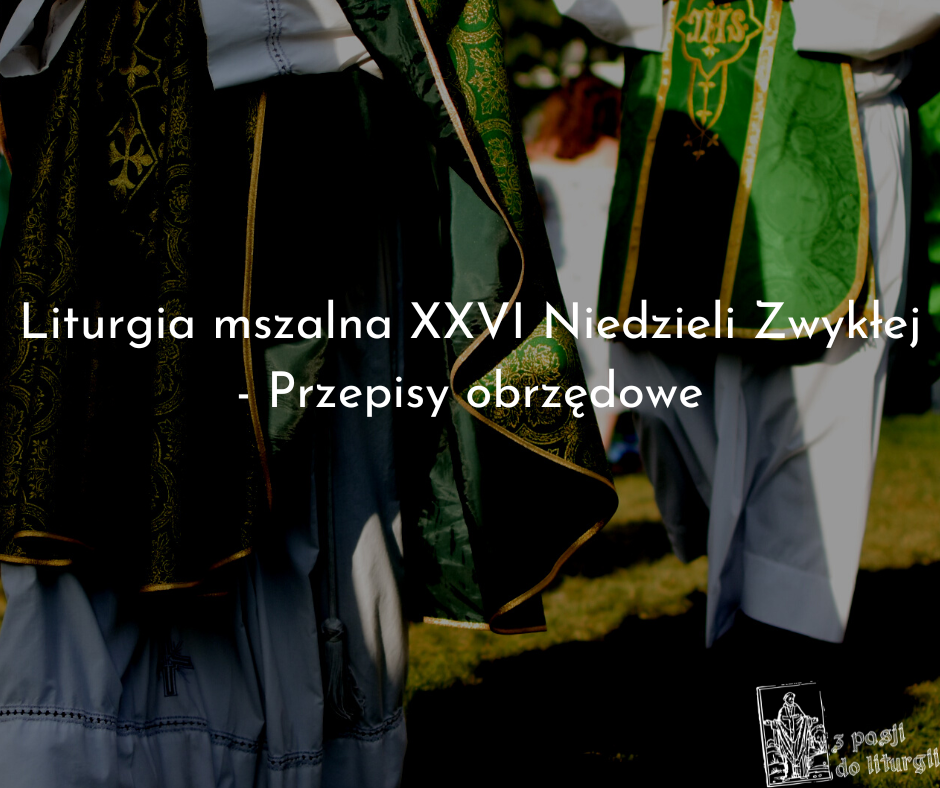Liturgia mszalna XXVI Niedzieli Zwykłej – Przepisy obrzędowe

W celu przybliżenia wszystkich przepisów, dotyczących liturgii mszalnej XXVI Niedzieli Zwykłej, przypominamy, że:
- Kolorem szat liturgicznych jest zieleń (IGMR, nr 346c).
- Mszę św. sprawuje się ze specjalnego formularza mszalnego (MR, s. 267).
- Można zastosować IV formę aktu pokuty.
- Odmawia się Chwała i Wierzę.
- Prefacją mszalną jest jedna z prefacji na niedziele zwykłe (nr 28-35), chyba że kapłan wybiera IV Modlitwę eucharystyczną – wówczas odmawia się prefację tej anafory.
- Można odmówić I, II (w Polsce), III lub IV Modlitwę eucharystyczną (IGMR, nr 365).
- Sprawując liturgię recytowaną, kapłan wybiera spośród dwóch zaproponowanych antyfon komunijnych jedną, którą odmawia.
- Można odmówić uroczyste błogosławieństwo w Okresie Zwykłym, wybierając spomiędzy wersji A-E (MR, s. 386*-387*) lub też zastosować modlitwę nad ludem, wybierając spośród wielu form konkretny wariant (Tamże, s. 395*).
Opr. Dawid Makowski

